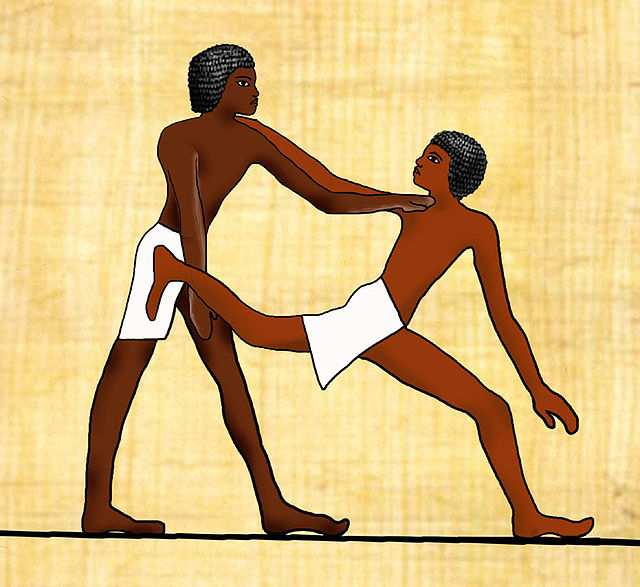Origins of Martial Arts: Empower Your Journey Through History
By Maurice Novoa a master under the Yuen Kay Shan, Ip Man and Pan Nam lineages.
Introduction
Martial arts, the ancient practice of combat and self-defense, have captured the imagination of people across the globe for centuries. As a seasoned Wing Chun Kung Fu instructor with over 30 years of experience, I invite you on a journey through the intriguing origins of these time-honored disciplines. Let’s delve into the historical roots and evolution of the fighting arts, exploring the diverse cultures and techniques that have shaped the art of combat as we know it today.
1. The Ancient Beginnings
1.1 The Birth of Hand-to-Hand Combat
The origins of martial arts trace back to the ancient civilizations of Mesopotamia, Egypt, and China, where early forms of hand-to-hand combat were practiced for self-defense and warfare. These early systems laid the foundation for the evolution of various fighting styles.
1.2 The Ancient Arts of the Far East
In the Far East, martial arts took root in India, with the development of Kalaripayattu, an ancient martial art that dates back over 3,000 years. From India, the knowledge and techniques spread to neighboring countries, shaping the fighting styles of Southeast Asia and East Asia.
2. The Rise of Asian Martial Arts
2.1 China: The Cradle of Kung Fu
China’s rich history in martial arts is evident in the development of Kung Fu, also known as Wushu. Ancient legends attribute the origin of Kung Fu to the Yellow Emperor, who reigned around 2700 BC. Kung Fu encompasses a wide range of styles, each with its unique characteristics and techniques.
2.2 Japan: The Way of the Warrior
In Japan, the samurai class played a pivotal role in shaping the martial arts landscape. With disciplines like Jujutsu and Kenjutsu, the samurai honed their combat skills for the battlefield. Over time, these practices evolved into more refined forms, such as Judo, Aikido, and Kendo.
2.3 Korea: The Art of Foot and Fist
Korea boasts a rich tradition, with Taekkyeon being one of the earliest recorded forms of Korean martial arts. The discipline and combat techniques of Taekkyeon have influenced the development of modern Taekwondo, a global sport recognized for its dynamic kicks and powerful strikes.
2.4 Southeast Asia: Silat and Muay Boran
In Southeast Asia, the art of Silat has thrived for centuries, with influences from various cultures across the region. Silat encompasses a diverse range of styles, characterized by fluid movements and the use of both striking and grappling techniques.
In Thailand, the precursor to modern Muay Thai, known as Muay Boran, was practiced as a martial art and combat skill in warfare. With the passage of time, Muay Boran evolved into the Muay Thai we know today, captivating audiences worldwide with its electrifying matches.
3. The Transmission of Knowledge
3.1 The Role of Martial Arts Masters
Throughout history, martial arts knowledge was passed down from generation to generation through dedicated masters. These revered figures served as custodians of their respective art forms, imparting not only physical techniques but also the philosophical and moral aspects of martial arts.
3.2 Martial Arts and the Warrior Class
In ancient times, martial arts were often associated with the warrior class and were an integral part of military training. These skills were essential for warriors to defend their kingdoms and uphold honor and chivalry.
4. The Evolution of Modern Martial Arts
4.1 The Influence of Western Styles of Fighting
As the world saw increasing cultural exchange and globalization, Western fighting styles also influenced and integrated with traditional Asian martial arts. Concepts from boxing, fencing, and other Western styles were incorporated into the existing fighting systems.
4.2 The Rise of Mixed Martial Arts (MMA)
In recent decades, MMA has gained immense popularity, bringing together techniques from various disciplines. MMA competitions, such as the Ultimate Fighting Championship (UFC), showcase fighters utilizing a combination of striking and grappling techniques.
Conclusion
The origins of martial arts are a captivating journey through the annals of history, encompassing a vast array of cultures, traditions, and techniques. From the ancient battlefields of Asia to the modern global stage of MMA, fighting styles have evolved into a diverse and dynamic field of combat and self-discipline.
As you embark on your martial arts journey, embrace the rich history and profound legacy of these time-honored disciplines. With each punch, kick, or grapple, you will not only hone your physical abilities but also develop a deeper understanding of the profound philosophy and spirit that lies at the heart of these fighting arts.

